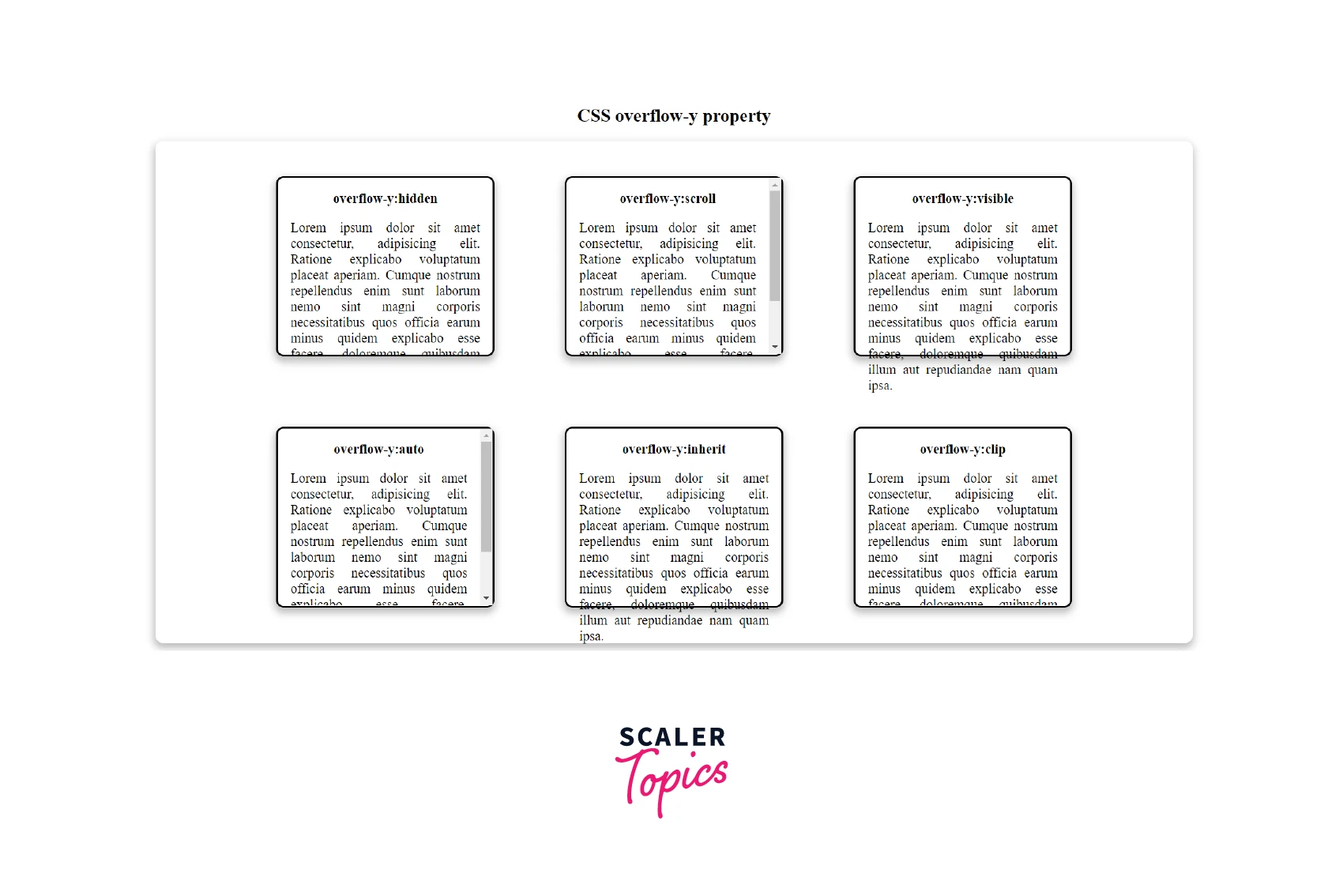CSS Overflow-y Property
Learn via video course

JavaScript Course With Certification: Unlocking the Power of JavaScript
by Mrinal Bhattacharya
1000
4.8
Overview
The overflow-y property determines whether to clip, add a scroll bar, or display overflow content when a block-level element overflows the content box vertically (i.e., top and bottom).
Syntax
CSS overflow y accepts keyword and global values like visible, hidden, clip, scroll, auto, inherit, etc. The default value of the CSS overflow-y property is visible.
We will discuss the various CSS overflow y supported property values in the following section of the article.
Overflow-y in CSS
| Value | Description | Syntax |
|---|---|---|
| visible | It is the default value. The visible keyword renders the content outside the padding box and prevents the clipping of the content. | overflow-y |
| hidden | The hidden keyword clips the content to fit it vertically in the padding box. There are no scrollbars provided. | overflow-y |
| clip | The clip value acts similarly to the hidden keyword. When CSS property overflow is hidden, the contents overflowing get hidden, but potentially they can be scrolled into view. In contrast, with the clip keyword, the overflow gets clipped off. | overflow-y |
| scroll | The scroll keyword clips the content and adds a scrollbar mechanism. | overflow-y |
| Auto | The auto keyword depends on the user agent. If content fits inside the padding box, it looks the same as visible; otherwise, it causes a scrolling mechanism. | overflow-y |
| inherit | It inherits the overflow behavior from its parent element. | overflow-y |
Note: If overflow-x is hidden, scroll, or auto, then overflow-y will implicitly compute to auto if it is not specified.
Examples
Setting overflow-y Behavior
Let us explore the CSS overflow y supported property values through the following example.
HTML:
CSS:
Output:

- The hidden keyword clips the overflowing content of the first block.
- The scroll keyword adds a scrollbar for the second box.
- The overflowing content overflows outside the third box.
- The auto keyword adds a scrollbar because the content overflows the fourth box.
- The inherit keyword inherits the default overflow-y behavior.
Browser Support
The following browsers support the CSS overflow y property:
| Browser | Version |
|---|---|
| Google Chrome | 1.0 |
| Safari | 3 |
| Mozilla Firefox | 3.5 |
| Microsoft Edge | 12.0 |
| Opera | 9.5 |
| Chrome Android | 18 |
| Firefox for Android | 4 |
| Opera Android | 14 |
| Safari on iOS | 1 |
| Samsung Internet | 1.0 |
| WebView Android | 4.4 |
Conclusion
- The overflow-y CSS property handles the overflow behavior of the content.
- It can clip the overflowing content, add a scrollbar behavior or display the overflowing content outside the container.
- CSS overflow y accepts keyword and global values like visible, hidden, clip, scroll, auto, inherit, etc.
- The default value of the CSS overflow-y property is visible.
Related Properties
- overflow
- text-overflow
- overflow-x
- white-space
